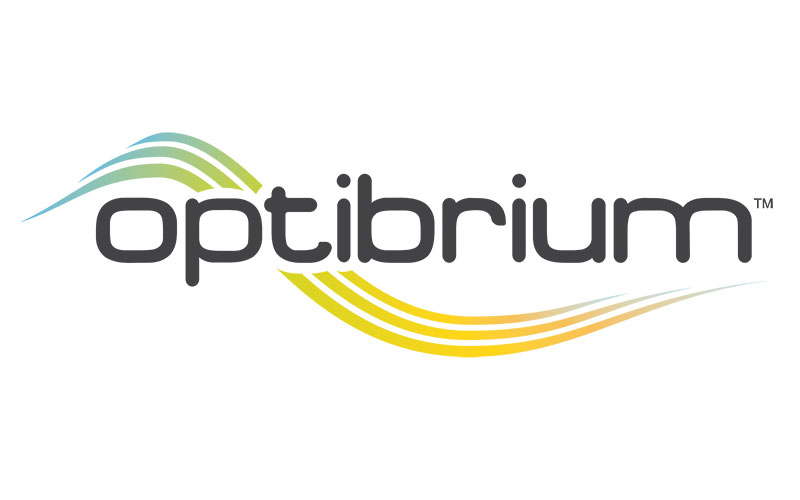Introduction
The US biotechnology market stands as a colossus in the global life sciences landscape, offering unparalleled opportunities for innovation and growth. For UK and European biotech firms, this terrain represents not merely a geographical expansion but a transformative leap into a realm of heightened potential and fierce competition. The allure is undeniable: access to the world’s largest healthcare market, a robust ecosystem of research institutions, and a deep pool of venture capital.
Yet, the conventional wisdom often prescribes a Faustian bargain for those seeking to traverse the Atlantic. The well-trodden paths of Big Pharma partnerships or strategic mergers frequently demand a significant sacrifice: the relinquishment of equity and strategic autonomy. This poses a formidable dilemma for founders who have meticulously cultivated their enterprises and intellectual property.
However, this binary choice between isolation and capitulation is a false dichotomy. A new approach is emerging, allowing biotech innovators to establish a formidable presence in the US market while preserving their independence and strategic vision. This article delineates alternative strategies for UK and European biotech firms to penetrate the US market, focusing on methods that maintain equity and control.
The Landscape: European and UK Biotech Expansion to USA
The landscape of European and UK biotech companies expanding to the USA has seen significant developments in recent years. Here are some key statistics that highlight this trend:
- In 2024, approximately 35% of European biotech companies with valuations over €100 million have established a US presence, up from 28% in 2023.
- UK biotech firms setting up US subsidiaries increased by 22% from 2023 to 2024.
- By Q2 2024, 45% of European biotech startups founded since 2020 reported having US operations or partnerships, compared to 37% in 2023.
These statistics underscore the growing trend of European and UK biotech companies expanding their presence in the US market. They highlight the increasing interconnectedness of the global biotech ecosystem and the strategic importance of the US market for European innovators.
Direct Market Entry: A Path to Independence
The United States, a titan in the global biotechnology industry, offers immense opportunities for UK and European biotech firms. Yet, the traditional paths of partnerships and mergers often demand a significant compromise: relinquishing equity and strategic autonomy. This dilemma for founders seeking to expand into the US market can be daunting. However, a new paradigm is emerging, allowing biotech innovators to establish a formidable presence in the US while preserving their independence. This article explores alternative strategies, focusing on methods that maintain equity and control, such as direct market entry.
Foothold America Client Case Studies
Optibrium – Steady Growth

Optibrium is a UK-based molecular design biotech company founded in 2009. Its steady growth has brought it to 60 employees, covering key US life science hubs in Boston, MA, and San Francisco, CA, and has been supported by three private equity funding rounds. Utilizing several hiring models, they had boots on the ground in the US beginning in 2015 and hired directly under their US subsidiary beginning in 2022.
Exscientia – Modest US Footprint

Exscientia is an innovative biotech company known for its generative AI drug discovery successes. Founded in Oxford, UK, in 2012, it chose a modest US footprint. One US C-suite individual was brought on board in 2019, postponing significant headcount growth until its USD 510 million IPO on the NASDAQ in 2021.
Poxel – Small But Mighty

Poxel is a biopharmaceutical company based in Lyon, France, founded in 2009. Just before its IPO on the Euronext stock exchange in 2015, it expanded its footprint to include a handful of US employees, evolving to direct hire through its US entity in 2019.
Setting up a US Subsidiary
In 2023, 65% of European biotech companies establishing US subsidiaries chose Delaware as their state of incorporation, followed by 15% in Massachusetts and 10% in California.
The average time from decision to fully operational US subsidiary for European biotech firms decreased from 9 months in 2020 to 6.5 months in 2023, largely due to streamlined processes and increased use of specialized service providers.
As of 2024, 72% of European biotech companies with US subsidiaries opted for a C-Corporation structure, while 28% chose an LLC structure.
In 2023, 40% of European biotech companies establishing US subsidiaries chose to locate their physical operations in the Boston/Cambridge area, 25% in the San Francisco Bay Area, and 15% in the Research Triangle Park area of North Carolina.
Establishing a US subsidiary represents a pivotal step in a biotech company’s transatlantic journey. Far from being a mere legal formality, this process demands a nuanced understanding of corporate structures, tax implications, and strategic positioning within the American biotechnology landscape.
The choice of corporate entity is paramount. While a C-Corporation is often the default for its familiarity to US investors and potential for public listing, the Limited Liability Company (LLC) structure offers flexibility that can be advantageous in certain scenarios, particularly for companies in early stages of US market penetration. The decision should be made in consultation with tax advisors well-versed in both US and home country regulations to optimize for cross-border operations and future funding rounds.
Selecting the right location for incorporation and operations is equally crucial. Delaware, with its business-friendly laws and established body of corporate case law, remains a popular choice for incorporation. However, the physical location of operations should be driven by strategic considerations. Biotech hubs like Boston, San Francisco, and San Diego offer rich ecosystems of talent, partners, and investors, but they also come with heightened competition and costs. Established hubs in areas like North Carolina’s Research Triangle or the Denver-Boulder corridor offer compelling alternatives, often with state-level incentives for biotech companies. Other established hubs in the Baltimore/Washington DC Metro and New York/New Jersey Metro areas are attractive options for talent and investors.
Tax structuring requires particular attention. The interplay between US federal taxes, state-level taxes, and international tax treaties can significantly impact the overall tax burden and operational efficiency. Strategies such as transfer pricing for intellectual property and careful structuring of intercompany transactions can help optimize the global tax position while ensuring compliance with US and home country regulations.
When setting up a US subsidiary, consider how you’ll hire in the US. Will you use a Professional Employer Organization (PEO), hire contractors, or directly employ staff? Each option has implications for your expansion strategy.
Building a US Team
US-based employees in European biotech companies grew by 25% from 2023 to 2024, highlighting the trend to hire in the US for expansion.
The average time to fill senior-level positions in US biotech subsidiaries of European companies decreased from 6 months in 2022 to 4.5 months in 2024, indicating an improving talent acquisition process.
As of 2024, 70% of European biotech firms entering the US market reported using a hybrid staffing model, combining direct hires with outsourced services and consultants.
As of 2024, 59% of European biotech companies with US operations reported having at least one C-suite executive based in the US, up from 40% in 2022.
The composition and culture of the US team can make or break a biotech company’s American ambitions. This process goes beyond mere hiring; it’s about cultivating a team that can navigate the nuances of the US market while staying true to the company’s core vision and values.
Leadership selection is critical. The ideal candidate for heading US operations often combines a deep understanding of the US life sciences landscape with the ability to bridge cultural and operational gaps with the European parent. This might be an American executive with international experience or a European leader who has successfully operated in the US market. The key is finding someone who can act as a cultural translator, helping to align US market expectations with the company’s global strategy.
Beyond leadership, building out the core team requires a strategic approach. Key early hires typically include:
1. Business Development:
A seasoned professional with established networks in the US biotech and pharmaceutical industry can be instrumental in forging partnerships and collaborations.
2. Regulatory Affairs:
Given the centrality of FDA interactions to US success, having in-house expertise in navigating the US regulatory landscape may be desirable.
3. Clinical Development:
A team with experience designing and executing FDA-compliant trials is essential if clinical trials are part of the US strategy.
4. Commercial Strategy
Even for companies not yet at the commercialization stage, early input on US market access and reimbursement strategies can shape development decisions.
The hiring strategy often evolves as the US presence matures. Initially, a lean team supplemented by consultants and contract research organizations (CROs) can provide flexibility. As operations scale, building in-house capabilities becomes more cost-effective and strategically important.
Cultural integration presents both challenges and opportunities. The direct communication style and fast-paced decision-making common to US biotech can clash with more consensus-driven European approaches. Successful companies often implement cross-cultural training programs and create opportunities for staff exchanges between US and European offices to foster mutual understanding.
Compensation structures require careful calibration. The expectations and norms in US biotech, particularly regarding equity compensation, often differ significantly from European practices. Designing competitive packages in the US market while maintaining global equity is a delicate balance.
Remote work trends, accelerated by recent global events, offer new possibilities in team building. They allow companies to tap into talent pools beyond traditional biotech hubs and can facilitate closer integration with European operations. However, this approach demands investment in robust communication tools and processes to maintain cohesion and productivity.
Navigating the US Healthcare System
- As of 2024, the US healthcare market is valued at approximately $4.3 trillion, with the biotechnology sector accounting for about $180 billion of this total.
- In 2023, the average time from FDA approval to widespread insurance coverage for new biotech drugs was 18 months, down from 24 months in 2020.
- The US biosimilars market is projected to grow at a CAGR of 24.7% from 2023 to 2028, presenting both opportunities and challenges for European biotech firms entering the US market.
Unlike the predominantly single-payer systems of many European countries, the US presents a complex multi-payer landscape. This mosaic of private insurance—employer-sponsored and individual plans—and government programs like Medicare and Medicaid requires a multifaceted approach to market access and reimbursement strategies.
The ongoing shift from fee-for-service to value-based care models adds another layer of complexity, influencing everything from clinical trial design to post-market data collection. Navigating this landscape requires an understanding of various reimbursement models and the ability to engage effectively with a diverse set of stakeholders.
Marketing and sales strategies that proved effective in Europe often require significant adaptation for the US market. Compliance with FDA regulations on product promotion is stringent, and the widespread adoption of digital health platforms and telemedicine introduces new channels for engagement that must be leveraged judiciously.
Fundraising in the US

While venture capital and private equity remain cornerstone funding sources, the approach to engaging these investors differs markedly from European norms. US investors often have specific expectations regarding growth trajectories, exit strategies, and board representation. Preparing for their rigorous due diligence processes and structuring deals that align with US market expectations is crucial for successful fundraising.
However, equity financing is not the only avenue available. The US offers a rich landscape of non-dilutive funding options, particularly for companies operating in areas of high unmet medical need or national priority. NIH (National Institutes of Health) grants, including the SBIR (Small Business Innovation Research) and STTR (Small Business Technology Transfer) grant programs, offer substantial funding without equity dilution. Similarly, Department of Defense and DARPA (Defense Advance Research Projects Agency) funding can provide significant capital for companies working on dual-use technologies.
- US venture capital investment in European biotech firms reached $4.2 billion in 2023, with projections suggesting a 15% increase for 2024.
- In 2024, 40% of funding rounds for European biotech companies included at least one US-based investor, up from 33% in 2023.
For companies eyeing public markets, the decision between NASDAQ and NYSE listings introduces another set of considerations. Each exchange offers distinct advantages and comes with its own regulatory requirements. Understanding SEC (Securities and Exchange Commission) regulations for foreign private issuers and preparing for the unique aspects of US biotech IPOs (Initial Public Offering) is essential for a successful public offering.
Regulatory Strategy for Direct Entry
- The number of INDs (Investigational New Drug applications) filed by European biotech companies with the FDA increased by 18% from 2023 to 2024.
- In 2023, 45% of European biotech companies entering the US market engaged US-based regulatory consultants before their first FDA interaction, up from 35% in 2021.

Engaging with the FDA is not a one-time event but an ongoing process that begins long before filing an Investigational New Drug (IND) application. Early and frequent consultation with the FDA, through mechanisms like pre-IND meetings, Type C meetings, or INTERACT (initial advice) meetings, can provide invaluable guidance on study design, endpoint selection, and data requirements.
Navigating the IND process requires a robust preclinical data package and clinical trial protocols that meet scientific rigor and comply with US-specific regulatory requirements. This sometimes necessitates adapting trial designs and endpoint selection to align with FDA expectations, which may differ from the EMA (European Medicines Agency) or the UK’s MHRA (Medicines and Healthcare Regulatory Agency).
For companies working on innovative therapies or addressing areas of high unmet need, the FDA offers several expedited review pathways—Fast Track, Breakthrough Therapy, and Accelerated Approval. Understanding the nuances of these programs and positioning one’s product appropriately can significantly accelerate the path to market.
Challenges and Mitigation Strategies
- In a 2023 survey, 68% of European biotech executives cited understanding and navigating the US regulatory environment as their top challenge when entering the US market.
- European biotech companies that engaged US regulatory consultants prior to FDA submissions had a 35% higher rate of first-cycle approvals compared to those that didn’t, according to a 2023 industry report.
- European biotech companies that implemented comprehensive cross-cultural training programs reported 30% fewer operational issues in their first year of US market entry, according to a 2023 industry survey.
The path of direct US market entry is fraught with potential pitfalls. A common stumbling block is the underestimation of the US market’s sheer scale and complexity. What works in a single European country often fails to translate directly to a nation with 50 distinct state regulatory environments.
Cultural and operational differences, though often subtle, can have profound implications. For example, the US business culture, emphasizing rapid scalability and aggressive growth, can clash with the more measured approach common in European biotech.
Managing costs and burn rate during expansion is perhaps the most insidious challenge. The allure of the vast US market can lead to overextension, with companies establishing elaborate infrastructures before securing a reliable revenue stream.
Mitigating these challenges requires a multifaceted approach. It is crucial to conduct a thorough market analysis beyond surface-level demographics to understand regional healthcare dynamics. Adopting a hybrid approach, blending European and US leadership in key positions, can bridge cultural and operational gaps. A staged approach to expansion, prioritizing critical functions and leveraging virtual teams where appropriate, can help manage costs effectively.
Building a US Presence

- As of 2024, 70% of European biotech companies with US operations had established partnerships with at least one major US academic institution, up from 55% in 2022.
- As of 2024, 50% of European biotech companies with US operations had established a scientific advisory board with at least 50% US-based members, up from 35% in 2022.
- European biotech companies that participated in US-based accelerator or incubator programs reported a 40% faster time to first commercial deal in the US market, according to a 2023 industry survey.
Establishing a robust US presence requires embedding oneself in the fabric of the US biotech ecosystem. Cultivating relationships with key opinion leaders, strategic participation in industry conferences, and crafting a compelling digital presence are all crucial elements of this process.
The rise of telemedicine and digital health platforms presents both challenges and opportunities. Understanding how to integrate offerings into these digital ecosystems can be a key differentiator, potentially involving the development of companion digital tools or strategic partnerships with telemedicine providers.
Conclusion
The journey of direct market entry into the US for European and UK biotech firms is undoubtedly complex, but it offers unparalleled opportunities for those who navigate it successfully. The benefits are manifold: access to the world’s largest healthcare market, exposure to cutting-edge research and development ecosystems, and the potential for valuations that can transform a company’s trajectory, opening up new horizons and possibilities.
For biotech founders contemplating this path, the key lies in thorough preparation, strategic flexibility, and a willingness to embrace the unique dynamics of the US market while staying true to their core mission and values. Companies can expand their global footprint without sacrificing autonomy or vision by carefully structuring their approach, leveraging diverse funding sources, and building a strong, independent US presence.
As you target the lucrative US biotech market, let Foothold America be your strategic partner for a smooth and successful US expansion. Our deep understanding of your home market and the US biotech ecosystem means we speak your language and anticipate your needs. By partnering with us, you’ll sidestep common pitfalls, save valuable time and resources, and hit the ground running in key US biotech hubs. From expert guidance and streamlined hiring to comprehensive operational support, we handle the intricate details so you can focus on what you do best – innovating and growing your business.
Ultimately, the decision to enter the US market directly is not just a business strategy; it’s a commitment to bringing life-changing innovations to patients on a truly global scale. The potential financial and global impact rewards are immense for those with the vision, resilience, and strategic insight to undertake this journey. Ready to make your mark in the world’s largest biotech arena? Contact Foothold America today and turn your US expansion dreams into reality.
Additional Resources
For biotech leaders embarking on US expansion, the following resources offer valuable insights and support:
1. Regulatory Navigation:
– FDA’s Center for Drug Evaluation and Research (CDER), Small Business and Industry Assistance (SBIA)
– Reagan-Udall Foundation’s GENERATE program for regulatory science
2. Funding and Business Development:
– National Institutes of Health (NIH) SBIR/STTR programs
– Biotechnology Innovation Organization (BIO) BIO Business Solutions
3. Market Intelligence:
– IQVIA Institute for Human Data Science reports
– PwC Health Research Institute publications
4. Networking and Events:
– MassBio (Massachusetts Biotechnology Council)
– California Life Sciences Association (CLSA)
5. Legal and IP Considerations:
– USPTO’s Patent Pro Bono Program
– American Intellectual Property Law Association (AIPLA) resources
While not exhaustive, these resources provide a strong foundation for understanding and navigating the US biotech landscape. As the sector evolves rapidly, staying connected with these organizations and regularly updating one’s knowledge base is crucial for long-term success in the US market.
Guide for UK/European biotech firms on entering the US market while maintaining control. Covers strategies for direct entry, team building, fundraising, and regulatory navigation.
–
Sources:
Industry Reports:
EY Biotechnology Report (2024)
Deloitte Global Life Sciences Outlook
PwC Pharma 2020 series
Government and Regulatory Bodies:
FDA (Food and Drug Administration) annual reports and databases
EMA (European Medicines Agency) annual reports
NIH (National Institutes of Health) funding statistics
Industry Associations:
Biotechnology Innovation Organization (BIO) reports
PhRMA (Pharmaceutical Research and Manufacturers of America) annual reports
EuropaBio (European Association for Bioindustries) publications
Public Databases:
- ClinicalTrials.gov for clinical trial statistics
- USPTO (United States Patent and Trademark Office) for patent statistics
Laurie Spicer
UK Based
Over 25 years experience doing business in North American, European, and Asian markets with a primary focus and specialism on the complexity of the US market.
Lamar Manning
UK Based
Experienced HR professional with over 11 years of experience in driving business growth. Possessing dual US and UK citizenship, Lamar has experience in US HR, payroll and recruitment, bringing a unique perspective and international expertise to his approach.

